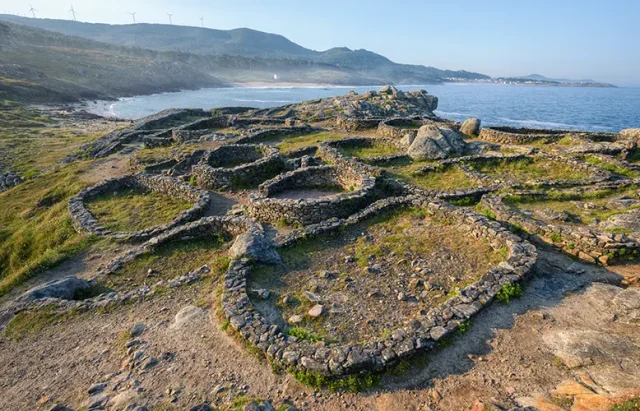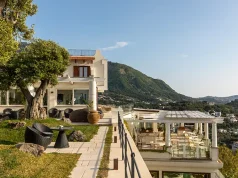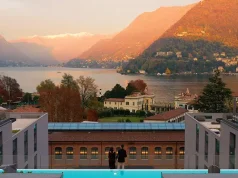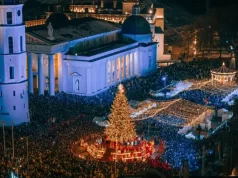
In Galicia, the air moves differently. It carries the scent of rain and the sea, and it softens every edge it touches. The hills rise and fall like waves, covered in chestnut and oak forests that hold the fog until midday. Rivers run quietly through the valleys, their surfaces silver and slow.
This is the northwest corner of Spain, bordered by the Atlantic and shaped by water. It is a land that seems to breathe in rhythm with the weather. One moment the clouds descend and the world disappears, the next the light returns and everything shines as if newly made.
The Land and Its Silence
Galicia is green even in winter. Moss covers walls, roofs, and tree trunks. The roads wind between stone villages where smoke curls from chimneys and dogs sleep in doorways. Everything here feels old but never frozen. The forest is always moving, the rivers always speaking.
The ancient Romans called this region the end of the world. To them, the Atlantic beyond Finisterre was the edge of everything known. Yet the people who live here do not see isolation. They see continuity — a connection between sea, land, and soul.
In the hills of Lugo and Ourense, you find paths that have been walked for a thousand years. They are the same paths pilgrims take to Santiago, though here they pass through silence instead of procession. Ferns grow taller than the fences, and the air smells of earth and rain.
The Villages Between Rivers
Villages appear suddenly from the fog. A cluster of stone houses, a small church, a fountain where the water never stops running. The rhythm of life here is quiet and circular. People tend gardens, repair roofs, gather wood, and wait for the weather to change.
The architecture is simple, made of granite and patience. The roofs are steep to shed the rain, and the walls are thick to hold the warmth. In many towns, you see hórreos — raised granaries built on stone pillars — standing beside modern houses, still used, still part of daily life.
In the mornings, the sound of bells carries through the mist. Not loud, but clear, as if marking time for the forest itself.
The Water That Shapes Everything
Everywhere in Galicia, water defines the landscape. Rivers carve deep gorges through the mountains, forming lakes and waterfalls that appear suddenly among the trees. Near Ourense, thermal springs rise from the ground, filling pools where people soak even in winter.
Further west, the rivers widen into estuaries that meet the sea in long fingers of saltwater. These are the rías — the deep coastal inlets that give Galicia its shape. Towns like Muros, Noia, and Combarro sit along their edges, half land, half sea. Fishing boats rest beside stone arcades, and laundry hangs from balconies above the tide.
The sound of water never leaves you. It comes from the rain, from the rivers, from the ocean breathing beyond the cliffs. Even the forests seem to whisper with moisture.
The Rhythm of the Road
Galicia is made for slow travel. The roads curve gently through hills and forests, following the shape of the land. Many bike tours in Spain include these quiet inland paths, linking villages and valleys in a way that feels almost meditative.
Cycling here is an act of observation. The mist closes in, then opens to reveal a view of rolling hills or a distant church tower. You hear the sound of your tires on wet stone, the call of a raven from the trees, the scent of wood smoke carried on the air.
The terrain is never harsh, but it asks for attention. You climb slowly, descend slowly, and notice everything — the patterns of moss, the glimmer of rain on leaves, the color of light changing hour by hour.
Santiago and the Echo of Footsteps
All roads in Galicia seem to lead, eventually, to Santiago de Compostela. Even for those who are not pilgrims, the approach to the city feels like a quiet arrival. The streets grow narrower, the air more fragrant with incense and stone. You hear footsteps on the old pavement, echoing under arcades that have seen a thousand years of movement.
The cathedral stands at the heart of the city, its façade darkened by time but still full of grace. Inside, the light filters through high windows and falls in soft pools across the floor. The atmosphere is not solemn but tender, as if the building itself has learned to breathe with those who enter.
Outside, rain glistens on the granite streets, and cafés fill with the sound of cups and conversation. Pilgrims and travelers sit side by side, each carrying a different kind of journey.
Toward the Coast
Beyond Santiago, the land continues toward the Atlantic. The road climbs through eucalyptus forests and descends toward the ocean’s edge. The cliffs near Finisterre are steep and exposed, but the view is vast and forgiving. The sea stretches beyond sight, calm one moment, fierce the next.
Fishermen still leave at dawn from the small harbors. Women mend nets along the shore, their hands moving with the rhythm of habit. The air smells of salt and heather, and the wind carries the sound of gulls calling from the rocks.
At sunset, the horizon turns copper, and the sea reflects the last light of the day. For centuries, this was considered the world’s end. Standing there, it feels more like the beginning of something endless.
The Forest That Holds Memory
Back inland, the forests reclaim everything. Abandoned farms, forgotten chapels, even stone bridges vanish slowly under moss and ivy. Yet nothing here feels lost. The land absorbs what remains and gives it back as beauty.
Walking through these woods, you sense the layers of history beneath the roots. Celts, Romans, monks, farmers — all have left their traces. The air feels dense with memory but never heavy.
When the mist returns, as it always does, the forest softens again. The light becomes quiet, the sound of water grows near, and everything seems to move at the same gentle pace.





